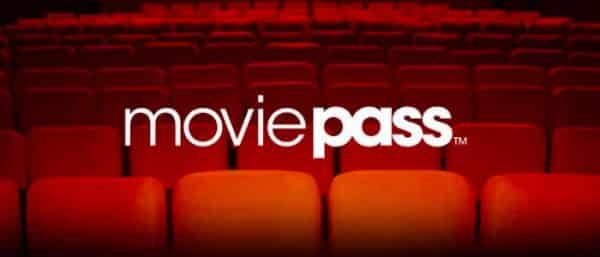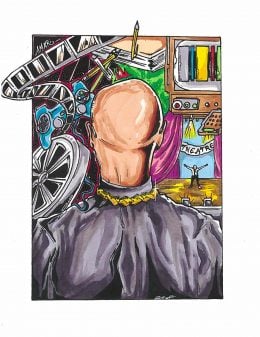Understanding the Rise & Fall of MoviePass
Long before MoviePass was a ridiculously low $9.99, I was a fan since screeners and screenings aren’t given out and movie tickets are expensive. Plus, at nearly $50 at one time, sometimes beyond because MoviePass has been a reactive company since the get-go, I easily got bang for my buck. Heck, I went to see…

Spoiler Alert: This summary and review contains spoilers.
Additionally, some images and text may include affiliate links, meaning we may earn a commission or receive products if you make a purchase.
Long before MoviePass was a ridiculously low $9.99, I was a fan since screeners and screenings aren’t given out and movie tickets are expensive. Plus, at nearly $50 at one time, sometimes beyond because MoviePass has been a reactive company since the get-go, I easily got bang for my buck. Heck, I went to see more films to make sure I got my money. Damn their idea that I’d treat my card like a gym membership.
However, to understand MoviePass’ rise and fall you have to go by stages. That is, before the $9.99 pricing and after.
Before the Price Drop
As noted in this article, there was a time when MoviePass wasn’t that bad. For those like me who wanted to have blogs which featured theatrical releases, it helped even the playing field. It didn’t mean being like a vulture on advancedscreenings.com and subscribing to a bunch of sites and social media profiles that flooded your timelines with content you didn’t want. All you had to do is subscribe to a monthly fee, or pay yearly, and you were set. Also, it felt very exclusive. Box office workers looked at your card funny, when you called the number because you had an issue, there weren’t prompts you just got people, it was good times. Even contacting people in the app was maybe a minute or two wait. Personally, I had maybe 2 – 3 issues before the price drop and even when seeing a late night movie, I got assistance. By late I mean midnight and was expecting to be SOL.
Making the only real issue being that you had to wait 24 hours exactly to see a movie vs. the current midnight deadline. There also was how basic the app was and getting a signal on your phone, but that was more your carriers fault than the app.
However, as articles were made and people found out about MoviePass, so began the problems. The main one being the whole “Ticket Stub Verification” thing. Which isn’t a big deal since we all get one, but more so breaking the habit of throwing it out after you get entry. This is on top of, the year before the price drop, your billing changing without being notified.
Yup, even back then, communication wasn’t something MoviePass did well when it came to the corporate side. Also, cancellation fees existed. Which, of course, because who in the hell reads terms and conditions, no one really knew about until they wanted to tap out. However, there wasn’t AMC A-List, or anything like that. Either you were part of a theater chain’s loyalty club or you paid full price. So while the business was frustrating, it seemed like a steal for frequent moviegoers.
After The Price Drop
Pretty much everything went to hell. MoviePass was a mom and pop shop that suddenly found itself with a line around the block. Which, from what it seemed, they didn’t really prep for what so ever. Well, outside of the egotistical idea that theater chains needed them and because of that, they’d share revenue. Thing is, while movie attendance was dropping, prices were going up thanks to IMAX, 3D, and the need for theaters to get something out of their deals with Disney and the rest. So while MoviePass had its place, it overhyped its influence on the market.
Plus, as noted in an article on Business Insider, while Mitch Lowe, CEO of MoviePass didn’t correlate the service to a gym membership, he apparently forgot his pitch to theaters. If the idea was, we will push more people your way and we should get a cut of that, then you have to factor in the people who are spending MoviePass’ money. Speaking for myself, let’s estimate I saw 4 movies a month. I live in the NJ/NY area where movies can be $12 to $16 (Rarely did I go to matinees since I had no need for a discount). One movie ticket pretty much made it where, at $9.95, I outspent what I paid.
So imagine 2+ million people (with 30% concentrated in high priced areas like San Francisco, LA, and NY). Most of us probably pay more than $10, including taxes, to see a movie. How in the world was that to be sustained?
Well, we began to see when Avengers and The Incredibles 2 came out. The app would magically not work, just before the rush of people on Thursday could see the movie. Leading to people, if they were lucky, getting their money back after harassing customer service through every method imaginable. So maybe the warning shots were long before Mission Impossible’s recent release.
The Future
Going by recent reports, MoviePass is now going to push movies that open to less than 1000 theaters alongside only have big movies available on week 3 of release. Supposedly, this should reduce cash burn by 60%. What this doesn’t answer though, even with a $14.95 price increase coming up, how will this company survive. It was introduced with grandeur goals it now is scaling back in ways that are irritating. Between not being able to see the same movie twice, which never was allowed – people just got away with it; ticket stub verification; doing purges (without warning); ticket price surges; and who knows what else in the future, can this company survive?
As noted, MoviePass has long been about trial and error and has been reactive. But, during its 7-year tenure, it didn’t really have competition. In fact, until AMC A-List, it didn’t have any competition which really challenged its niche market. But with service disruptions, changes which come nearly every 3 to 4 months, and its parent company constantly in the news about running out of money, will it be too little too late?
Personally, I believe the whole $9.95 thing should have just been a promo in my mind. A quick holiday surge to end the year on a high note vs. the way things were going to be. For while I can’t speak to how well MoviePass was doing when the price was around $50, at least for my area, surely Mr. Lowe, who has been bouncing from VP position to VP position for the last 20 years, had to have known better. Especially considering he wasn’t VP at some regional or small time company. He was VP of Business Development and Strategic Alliances at Netflix, before they became what they are today; Senior Director and VP of Operations at McDonald’s Corp; alongside a COO and President at Redbox. All of which, from my little research, didn’t come from him getting fired and finding a new job. So what went wrong here is the question.
Something that there are so many answers to.


